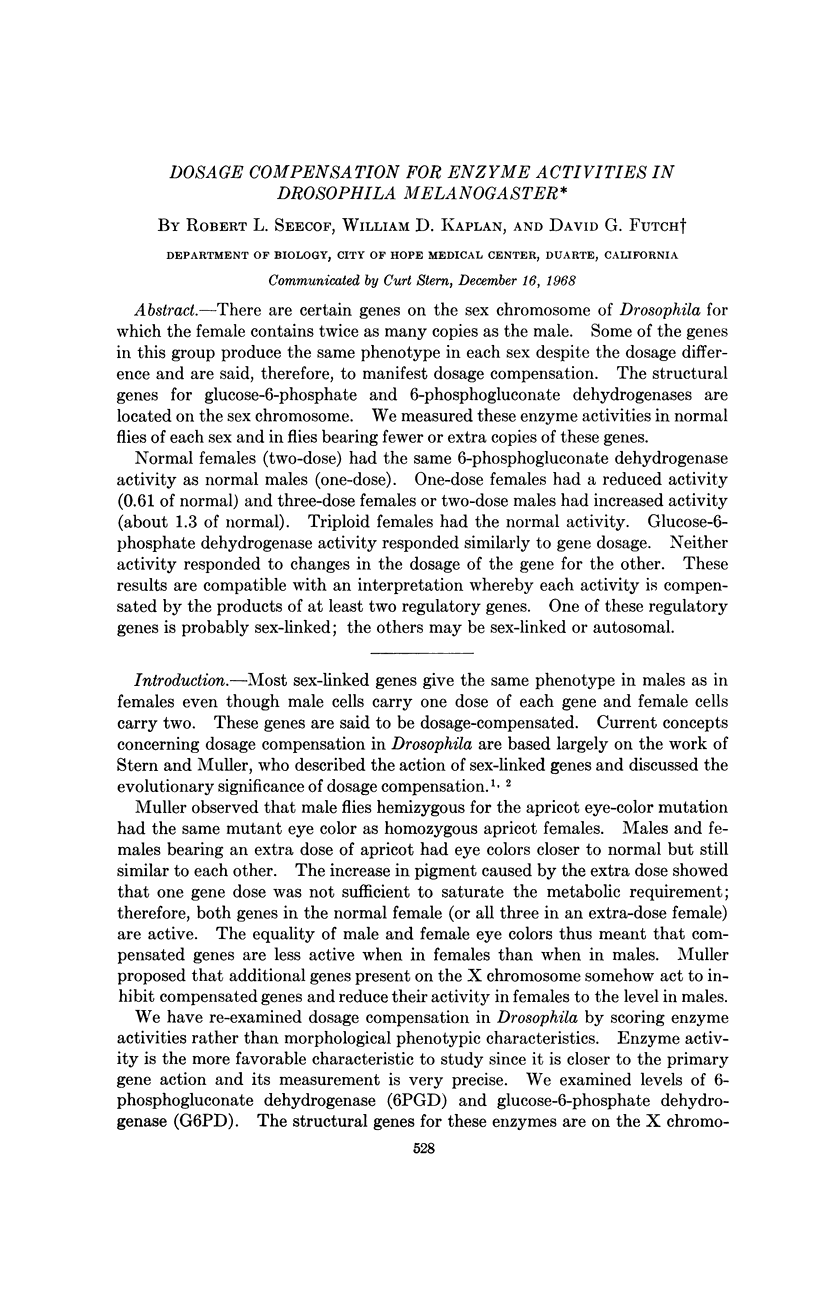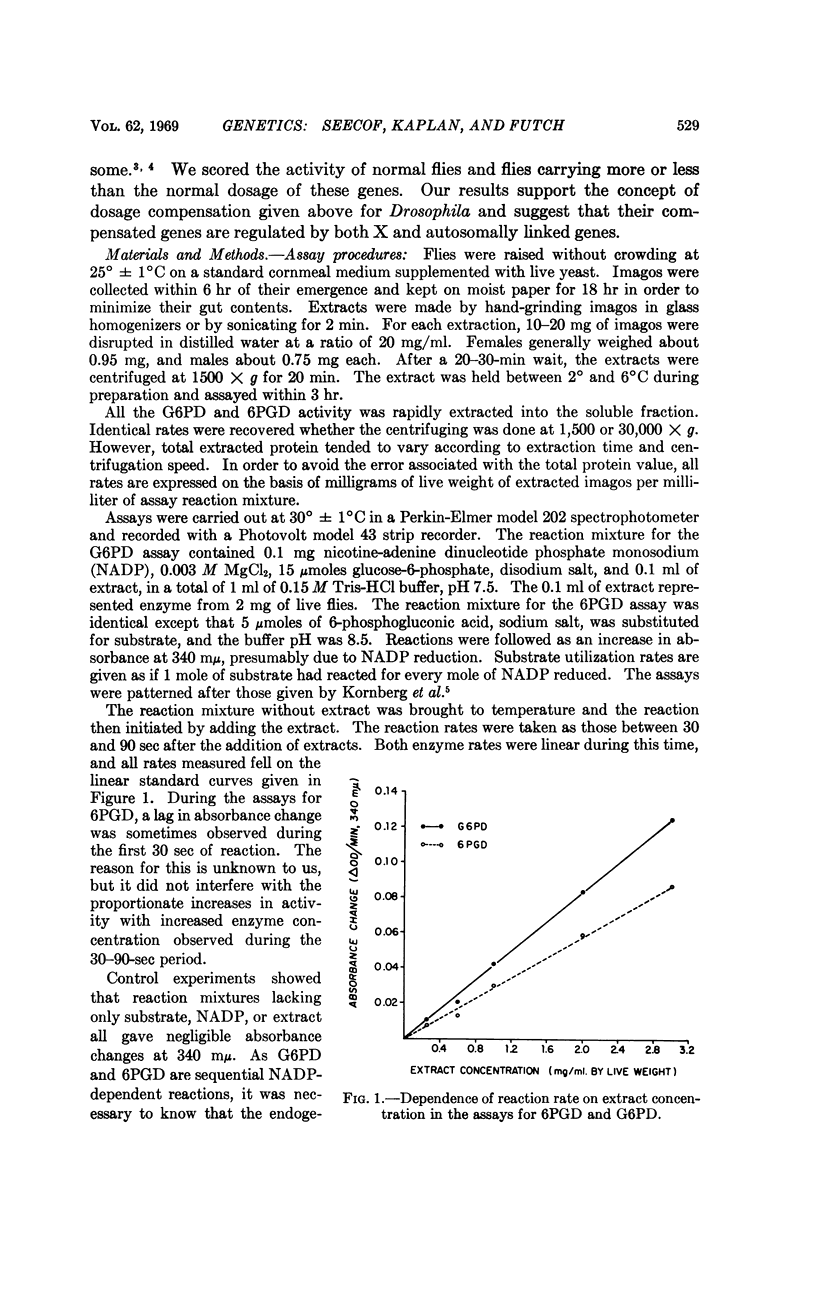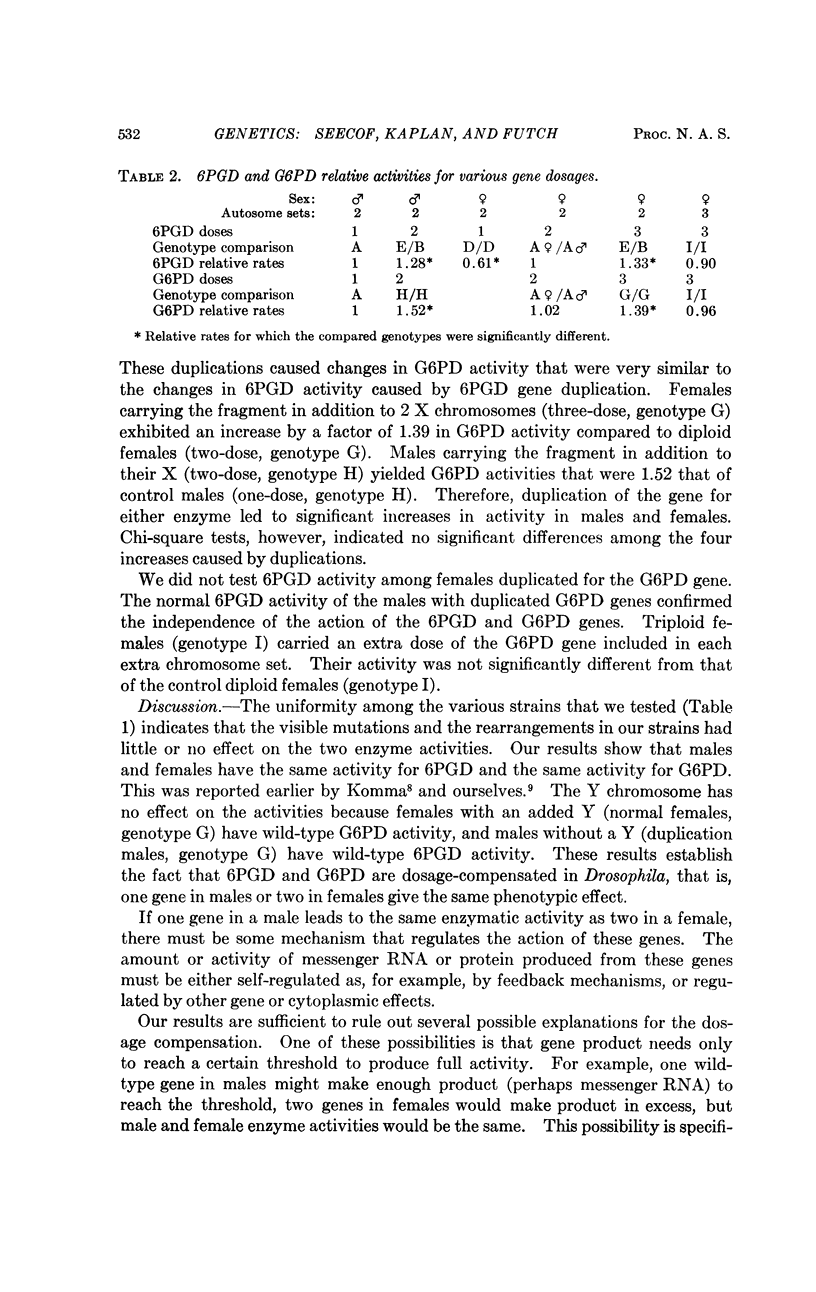Abstract
There are certain genes on the sex chromosome of Drosophila for which the female contains twice as many copies as the male. Some of the genes in this group produce the same phenotype in each sex despite the dosage difference and are said, therefore, to manifest dosage compensation. The structural genes for glucose-6-phosphate and 6-phosphogluconate dehydrogenases are located on the sex chromosome. We measured these enzyme activities in normal flies of each sex and in flies bearing fewer or extra copies of these genes.
Normal females (two-dose) had the same 6-phosphogluconate dehydrogenase activity as normal males (one-dose). One-dose females had reduced activity (0.61 of normal) and three-dose females or two-dose males had increased activity (about 1.3 of normal). Triploid females had the normal activity. Glucose-6-phosphate dehydrogenase activity responded similarly to gene dosage. Neither activity responded to changes in the dosage of the gene for the other. These results are compatible with an interpretation whereby each activity is compensated by the products of at least two regulatory genes. One of these regulatory genes is probably sex-linked; the others may be sex-linked or autosomal.
Full text
PDF







Selected References
These references are in PubMed. This may not be the complete list of references from this article.
- JACOB F., MONOD J. Genetic regulatory mechanisms in the synthesis of proteins. J Mol Biol. 1961 Jun;3:318–356. doi: 10.1016/s0022-2836(61)80072-7. [DOI] [PubMed] [Google Scholar]
- Kazazian H. H., Jr, Young W. J., Childs B. X-linked 6-phosphogluconate dehydrogenase in drosophila: subunit associations. Science. 1965 Dec 17;150(3703):1601–1602. doi: 10.1126/science.150.3703.1601. [DOI] [PubMed] [Google Scholar]
- Komma D. J. Effect of sex transformation genes on glucose-6-phosphate dehydrogenase activity in Drosophila melanogaster. Genetics. 1966 Aug;54(2):497–503. doi: 10.1093/genetics/54.2.497. [DOI] [PMC free article] [PubMed] [Google Scholar]
- OHNO S., KAPLAN W. D., KINOSITA R. Formation of the sex chromatin by a single X-chromosome in liver cells of Rattus norvegicus. Exp Cell Res. 1959 Oct;18:415–418. doi: 10.1016/0014-4827(59)90031-x. [DOI] [PubMed] [Google Scholar]
- SEECOF R. Gene dosage and enzyme activities in Drosophila melanogaster. Genetics. 1961 Jun;46:605–614. doi: 10.1093/genetics/46.6.605. [DOI] [PMC free article] [PubMed] [Google Scholar]
- YOUNG W. J., PORTER J. E., CHILDS B. GLUCOSE-6-PHOSPHATE DEHYDROGENASE IN DROSOPHILA: X-LINKED ELECTROPHORETIC VARIANTS. Science. 1964 Jan 10;143(3602):140–141. doi: 10.1126/science.143.3602.140. [DOI] [PubMed] [Google Scholar]
- Yen T. T., Glassman E. Electrophoretic variants of xanthine dehydrogenase in Drosophila melanogaster. Genetics. 1965 Nov;52(5):977–981. doi: 10.1093/genetics/52.5.977. [DOI] [PMC free article] [PubMed] [Google Scholar]


